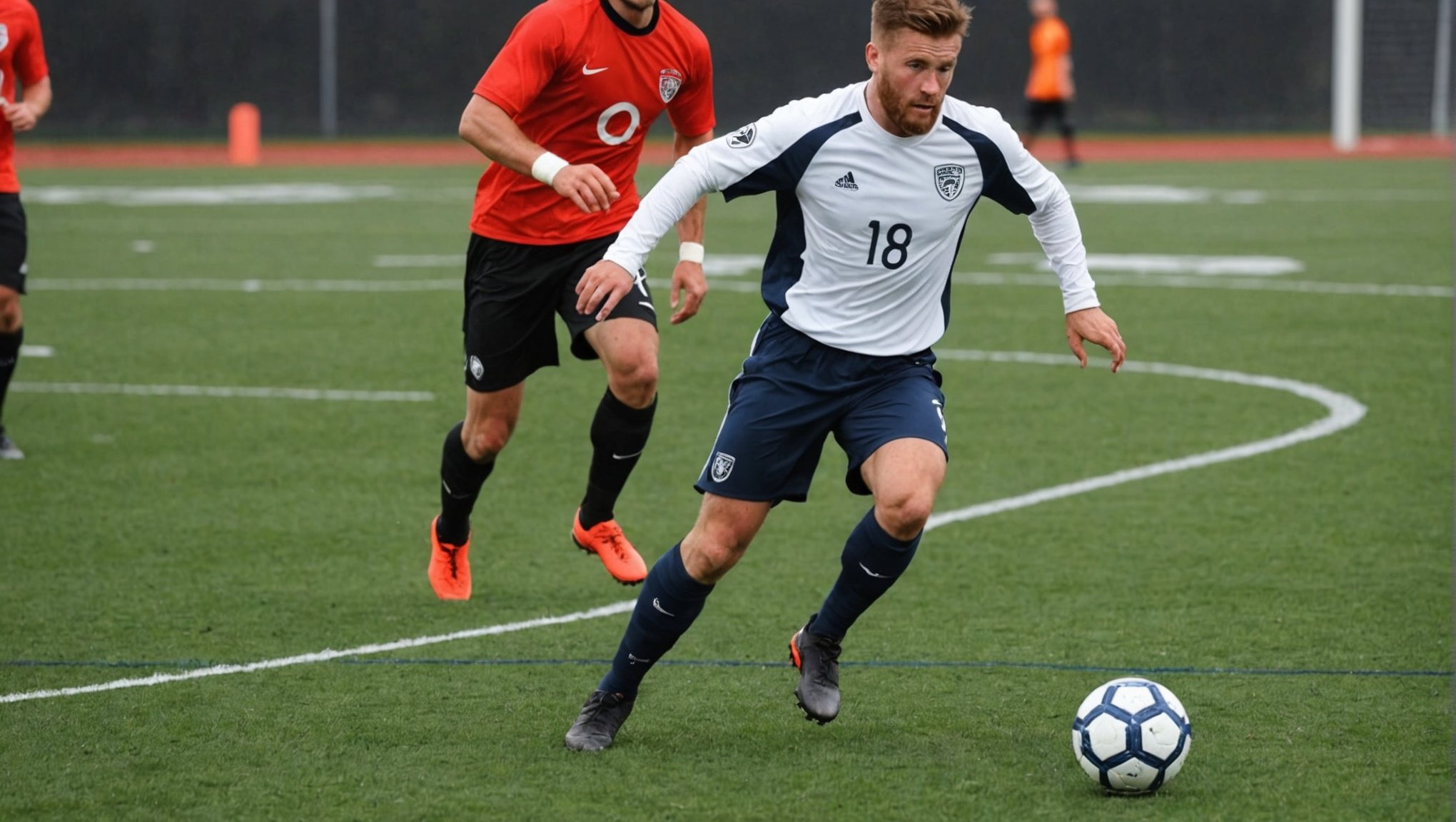Understanding the Importance of Left-Footed Skills
In the realm of football, ambidexterity is a highly sought-after skill, offering players an edge on the field. Being adept with both feet can greatly enhance a player’s ability to navigate complex gameplay. Left-footed drills are pivotal in developing this versatility, allowing athletes to maximize their potential. Such drills aren’t just about mastering technique; they encourage adaptability, enabling better ball handling and strategic plays.
Historically, players like Ryan Giggs and Roberto Carlos have exemplified the power of left-footed prowess. Their ability to seamlessly switch between feet provided them with opportunities to outmaneuver opponents and produce unexpected plays, contributing significantly to their teams’ successes. Every aspiring footballer can benefit from honing left-footed skills, often focusing on targeted reinforcement techniques.
Also read : Top Mental Techniques for Footballers to Boost Focus in High-Stakes Matches
Strengthening the left foot isn’t merely about individual competence; it amplifies overall gameplay. Developing one’s weaker foot can lead to improved performance in passing, shooting, and dribbling, making players unpredictable and invaluable assets on the field. Engaging in specialized training ensures that players not only refine their weaker side but contribute to a more cohesive and dynamic team performance.
Drills for Improving Left-Footed Kicking
Mastering left-footed kicking in football necessitates dedicated precision training and structured practice routines. Both beginners and advanced players benefit from customised drills tailored to their skill level.
Additional reading : Boosting Inclusivity and Diversity: Strategies for Football Clubs to Engage a Broader Fan Base
Basic Left-Footed Kicking Exercises
Starting with the basics ensures players build a strong foundation. For novices, fundamental techniques include focusing on form and technique. Simple drills like toe taps and wall passes help develop control and strengthen the non-dominant foot. Consistency in these areas is crucial for long-term success.
Advanced Drills for Skill Enhancement
Progressing to more complicated drills, players should concentrate on exercises that enhance both precision and power. Impact drills, such as target shooting from various distances, are effective. Incorporating ball movement challenges grip, control, and aids fluency during play. A consistent practice routine is vital here, fostering skills that are adaptable across various in-game situations.
Regular Training Tweaks
Regularly adapting left-footed kicking drills to match a player’s improving abilities is fundamental. Incorporating constructive feedback from coaches allows players to correct mistakes promptly. Over time, tracking training progress is key to recognising enhancement in both precision and overall football skills.
Ball Control Techniques for Left-Footed Precision
Mastering ball control drills is essential for honing left-foot ball handling skills, which play a pivotal role in technical skill development. Practicing specific exercises can significantly enhance a player’s ability to manipulate and control the ball with their left foot, highlighting precision and finesse in every touch.
Essential Exercises
Incorporating targeted ball control drills designed for left-footed players is crucial. Exercises should include activities like dribbling through cones to foster agility and enhance foot coordination. Wall passes are also beneficial, as they help improve a player’s ability to control and redirect the ball accurately.
Simulating Game Scenarios
Creating drills that simulate real-time game situations aids in improving left foot ball handling under pressure. Practicing 1v1 situations helps develop the skill to navigate through opposing players, fostering confidence and quick decision-making on the field.
Tips for Better Touch
Developing touch and finesse with the left foot can be achieved through consistent practice. Focus on maintaining a soft touch during ball control drills. This ensures better control and stabilization, especially when receiving passes or executing precise shots. Training should progressively increase in complexity to match real game demands, ultimately boosting a player’s adaptability and performance in competitive matches.
Mental Aspects of Developing Left-Footed Skills
Understanding the mindset in training is crucial for football players aiming to enhance their left-footed skills. Confidence plays a pivotal role in mastering tasks with the non-dominant foot. When a player believes in their potential to develop, they’re more likely to embrace challenges positively. Confidence can be fostered by setting achievable goals and celebrating small victories.
Football player psychology often involves overcoming mental blocks, particularly when it comes to left-foot drills. These blocks can stem from fears of failure or ingrained habits that favour the dominant foot. To tackle these challenges, players can use visualization techniques, imagining successful executions of movements before attempting them physically. Positive self-talk also aids in reprogramming the brain to view errors as learning opportunities rather than setbacks.
Maintaining motivation during practice can be demanding but essential for skill acquisition. Players should incorporate varied and enjoyable drills to keep the training sessions fresh and engaging. Setting specific, measurable objectives and tracking progress can help sustain enthusiasm and drive. Peer support adds an additional layer of encouragement and accountability, making the journey toward developing left-footed skills more collaborative and enjoyable.
Building a Training Routine
Developing an effective training plan is crucial for football improvement. Crafting a structured practice schedule can significantly influence a player’s development, utilising a blend of skill-focused and holistic training.
Designing a Balanced Training Schedule
Creating a balanced routine involves incorporating left-footed drills regularly. This could include dedicated sessions where players perform standard drills using their non-dominant foot, enhancing their versatility. These practice sessions should aim for specific, achievable goals, such as improving foot accuracy or dribbling skills. Balance skill training with overall fitness by integrating cardio, strength training, and endurance drills throughout the week, ensuring a comprehensive enhancement.
Incorporating Rest and Recovery
Rest and recovery are essential for muscle adaptation. Include dedicated rest days in your practice schedule, allowing the body time to recuperate and prevent fatigue. Techniques such as static stretching and yoga can also play a part in injury prevention by maintaining flexibility and reducing tension in overworked muscle groups.
Utilizing Resources and Tools
Investing in recommended training equipment like agility ladders or cones can enhance drills significantly. Coupled with online resources such as video tutorials, players can refine their skills independently. Engaging with the football community offers additional support and insights, facilitating a holistic learning environment.






